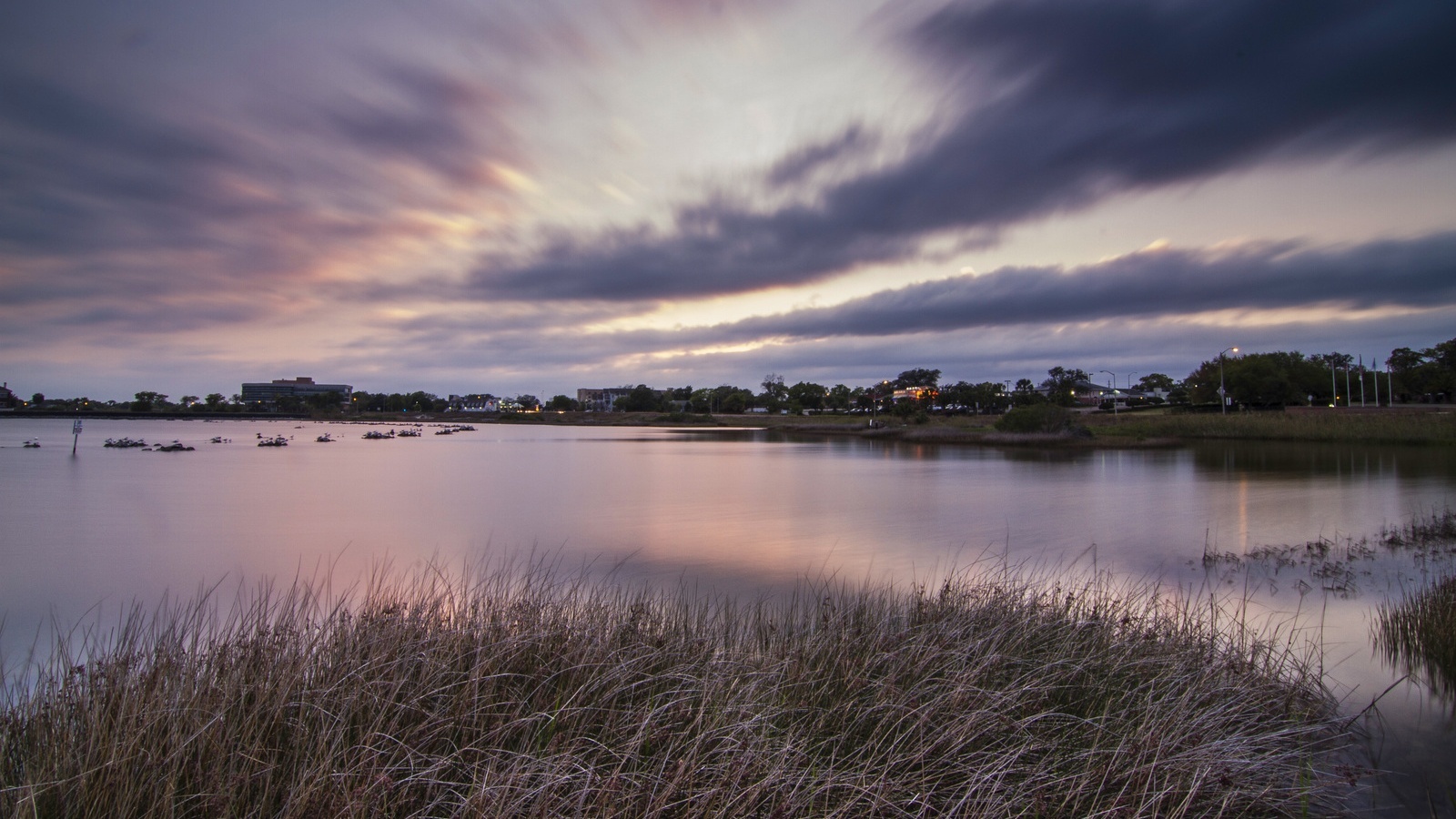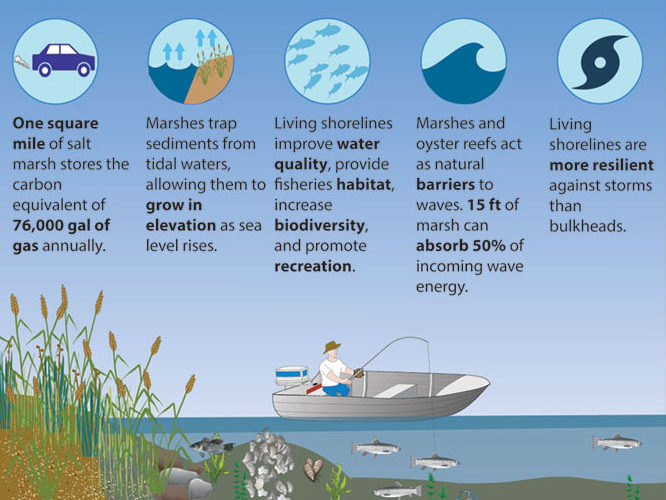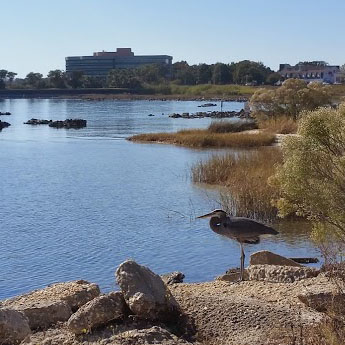We have much more to do and your continued support is needed now more than ever.
Protecting the Coast, Providing Wildlife Habitat: Pensacola’s Project GreenShores

How can communities best protect themselves against hurricanes and storms? Two decades ago the City of Pensacola, Florida began Project GreenShores, an effort to better protect its downtown by mimicking Mother Nature and restoring a section of Pensacola Bay.
Over the past half-century, Pensacola Bay has lost nearly all of its natural oyster reefs and roughly half of its sea grass beds – two key habitats for coastal wildlife. The concept behind living shorelines like Project GreenShores is simple: create oyster reefs to break waves – and plant native, wildlife-friendly vegetation like marsh or sea grasses in the protected area behind the oyster reefs.

What started as community project funded by a small local grant grew into a multi-phase, multi-million dollar project that is still growing. The first phase was completed in 2003 and restored 15 acres of oyster reef, salt marsh, and seagrass.
When Hurricane Ivan hit in 2004, the coastal highway behind the newly-build Project GreenShores received far less damage than elsewhere along the waterfront, according to Darryl Boudreau, was involved in the project’s creation. Furthermore, the oyster reefs damaged by the storm recovered naturally within a year.
In 2007, a second phase added another 15 acres to the project. Using funds from the Deepwater Horizon oil spill, Project GreenShores will soon be expanded by another 23 acres of salt marsh and oyster reefs. And the habitat continues to improve as more native plants colonize the area and seagrass expands from a few seedling “plugs” to a lush meadow.

Today, Project GreenShores is a popular destination for Pensacola residents and visitors. The project is now a stop on the Great Florida Birding Trail as the number of bird species seen in the area has climbed five-fold—from 10 to more than 50! The oyster reefs and marsh grasses are great habitat for juvenile fish. The area has also seen increased numbers of blue crabs, which were scarce in the bay before the project.
Another, unexpected benefit of the project is that the oyster reefs also help clean up Pensacola Bay: one adult oyster filters as much as 50 gallons of water a day. The marsh grasses also serve to sequester polluted run-off, keeping harmful nutrients and chemicals out of the bay’s waters.
For all these reasons, the National Wildlife Federation applauds living shoreline projects such as Project GreenShores and encourages similar projects elsewhere in the country and across the Gulf Coast. Two similar projects are in the works in the Pensacola area:
- NAS Pensacola and Escambia County Living Shorelines: This proposal would create more than 200 acres of marsh habitat and will better protect the home of the Blue Angels, the Navy’s flight demonstration squadron.
- Pensacola East Bay Living Shorelines and Oyster Reef Restoration: Located on the other side of the bay, this project would restore and protect 6.5 miles of coastline.
These projects are two of the several dozen projects that the National Wildlife Federation has prioritized for restoring the Gulf of Mexico – see the rest of the projects we support on our interactive map and website – Making the Most of Restoration.





















